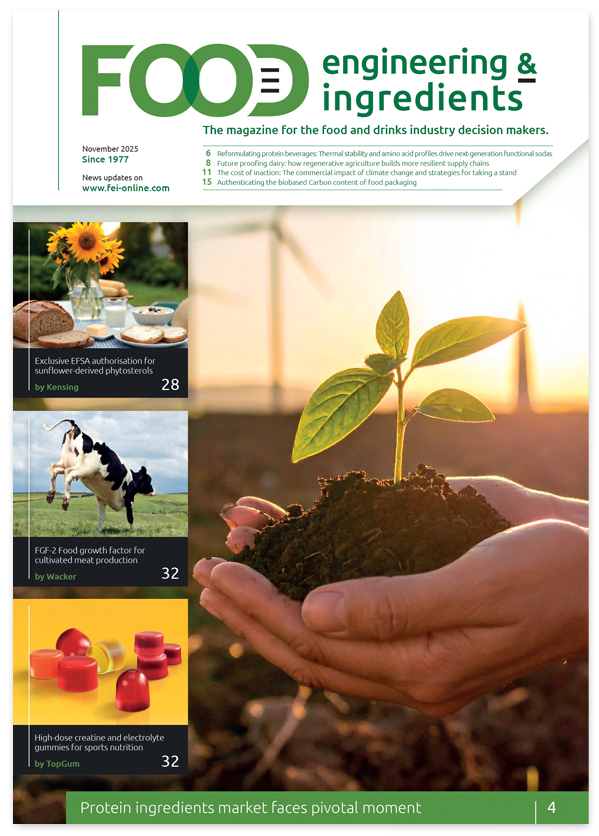Validating the natural source of ingredients by Carbon-14 testing
By Jordan Turner
Beta Analytic
Introduction
Natural product testing provides R&D teams and manufacturers with validation that their products are made with natural-sourced ingredients. Carbon-14 levels are measured to determine what percentage of an ingredient or product is naturally sourced and to identify the presence of petrochemical-derived adulterants. Substantiation of “natural” claims on product labeling can also be achieved via carbon-14 testing.
Carbon-14: A Tool for Authenticating Natural Products
Ingredients that are of plant or animal origin contain the isotope carbon-14. It is present in all living organisms while materials that are petrochemical-derived do not contain any carbon-14. Using natural product analysis, the percentage of carbon-14 present in a material is measured. This percentage indicates the amount of the material that is natural-sourced, or biobased, versus petroleum-derived. An entirely natural-sourced material will result in a determination of 100% biobased content. A material that contains 100% petrochemical-derived ingredients will result in 0% biobased content. The only way to determine if a material contains petroleum-derived adulterants instead of natural-sourced ingredients is through carbon-14 analysis.1
The Benefits of Testing Your Natural Products
Authenticating natural content claims of product ingredients supports marketing and quality control efforts by detecting potential adulteration of natural ingredients. Increasing demand for natural products and the associated cost of high-quality natural ingredients may lead manufacturers to opt for cheaper synthetics as an alternative to authentic plant-based ingredients.2 Natural sourced ingredients that are commonly adulterated to save costs include turmeric, vanilla extract, and lavender oil.3 This sets the stage for the use of misleading or falsified product labeling. Petroleum-based synthetic alternatives can be recognized compared to their natural counterparts because they no longer contain carbon-14. Thus, product integrity and label claims can be scientifically validated through natural product testing, proving ingredients are truly natural and unadulterated with petroleum-derived synthetics.
Natural product testing also aligns with the Food Chemicals Codex’s (FCC) method for determining the biobased content of food ingredients such as 1,3-propanediol. Published by the US Pharmaceutical Convention (USP), the FCC is a compilation of food ingredient standards that is recognized internationally. It provides criteria for suppliers in regards to purity, quality and identity of food ingredients and can be used as a guideline for authentication.4 The method uses carbon isotope signatures, including carbon-14, to recognize renewable carbon versus synthetic sources of ingredients. The FCC method also detects counterfeit ingredients, adulteration, and fraud.
Conclusion
Carbon-14 testing provides verification of the natural source by measuring the natural content of ingredients and flavors. Testing can accurately identify the percentage of a material that is biomass-derived and confirms if ingredients are natural-derived. Such evidence supports marketing and labeling claims that a product is natural and does not contain synthetic adulterants.
Beta Analytic
www.betalabservices.com
Sources
1 Gershon, H., Lykkeberg, A., Goren,F., and S. Mason. ACS Publications. Identifying Fraudulent Natural Products: A Perspective on the Application of Carbon-14 Analysis. (2019) Accessed here: https://pubs.acs.org/doi/10.1021/acs.jafc.9b01821
2 Beta Analytic. Beta Analytic Examines the Adulteration of Natural Ingredients. (April 2021) Accessed here: https://www.betalabservices.com/natural-ingredients/
3 Moore, J.C., Spink, J., and M. Lipp. Development and Application of a Database of Food Ingredient Fraud and Economically Motivated Adulteration from 1980 to 2010. Journal of Food Science. (April 2012) https://onlinelibrary.wiley.com/doi/epdf/10.1111/j.1750-3841.2012.02657.x
4 Perfumer & Flavorist. Food Chemicals Codex Features New Method for Determining Bio-based Content. (2011) Accessed here: https://www.perfumerflavorist.com/networking/news/company/112870874.html



